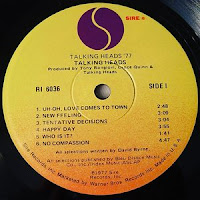Anybody with a keyboard and an Internet connection can connect to a group via social media, whether through FaceBook, LinkedIn, or Twitter.
For social media to be “social”, it’s a good idea to remember one’s manners.
In the case of the micro-blogging site Twitter, it’s a place for business-to-business marketers to engage with customers, prospects, influencers, analysts, media and others.
An effective business strategy is to use Twitter to share key industry topics, trends, regulations or other relevant and timely issues.
Twitter as a Reflection of Your Brand
I’d also like to suggest that Twitter is an expression of your brand.
A brand is a collection of perceptions in the mind of your prospect. Thus if follows that your Tweet stream contributes to that perception.
So it’s wise to operate within the constructs of common courtesy to lock in positive branding. Your Tweets are a reflection of your brand!
5 Easy Rules: A Matter of Common Courtesy
Inspired by conventional wisdom from Emily Post, Miss Manners and other etiquette experts, these tried and true rules are relevant when engaging in “virtual conversation” – especially if Tweeting on behalf of a client.
1. Listen when people tweet. A great conversation stopper is when someone is not paying attention or looks everywhere else but at the speaker. Same holds true with Twitter – acknowledging a compelling Tweet or content is polite – it lets folks know you are listening.
2. Don't monopolize the Tweet Stream.
Avoid a one-way series of “all about you” or “all about your client” messages. Retweet industry trends, link to expert blogs, business forecasts, or respond to a Tweet of interest. Don’t broadcast or blast Tweets about the client. (this was a hard lesson for me when coordinating Tweets for a tech client– PR habits die hard!)
3. Tweet specific questions to show interest & go deeper.
A classic conversation tip: nothing is as effective as the follow up question.
4. Watch your language. Good spelling, appropriate language, and a grasp of the English language all have a place even within the confines of 140 characters.
5. Please & thank you. Even in the virtual world, common courtesy never goes out of fashion.
A Success Story
These rules noted above were assembled as a result of managing the program. By taking this approach, and using powerful tools like Twiangulate to link to relevant followers, here’s what has been accomplished.
- Relevant followers have grown by 60%.
- Mentions and retweets by influential followers have grown 500%.
- Results also include several new media placements as a result of Twitter connections.
It pays to connect on Twitter, while minding one’s manners. There’s still much to learn – but it pays to be polite.









